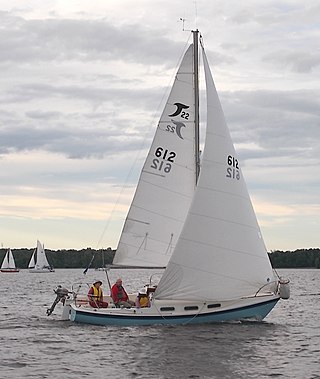
The Tanzer 22 is a Canadian trailerable sailboat, that was designed by Johann Tanzer and first built in 1970. The design went out of production in 1986.
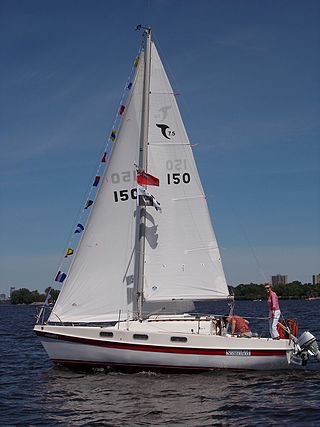
The Tanzer 7.5 is a Canadian trailerable sailboat, that was designed by Johann Tanzer and first built in 1977. The design went out of production in 1985.
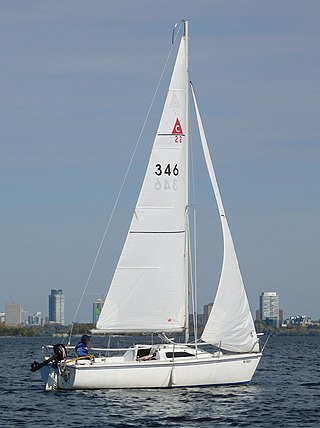
The Capri 22 is an American trailerable sailboat, that was designed by Gary Mull and Frank Butler and first built in 1984.
The Fun 23 is a French trailerable sailboat, that was designed by Joubert-Nivelt for one design racing and first built in 1982. The design is out of production.

The Mirage 24 is a Canadian trailerable sailboat designed by Cuthbertson & Cassian, the naval architecture design division at C&C Yachts, as a Midget Ocean Racing Club (MORC) racer and first built in 1972.

The Mirage 29 is a Canadian sailboat, that was designed by Philippe Harlé and first built in 1986.
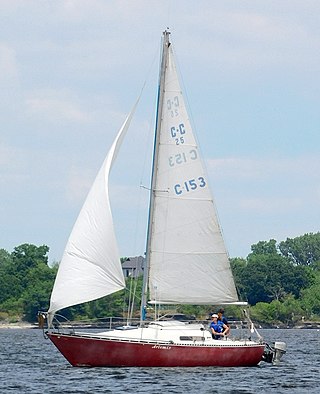
The C&C 25 is a series of Canadian sailboats, first built in 1973.

The Bayfield 25 is a Canadian pocket cruiser sailboat, that was designed by Ted Gozzard and first built in 1975.

The Halman 20 is a Canadian trailerable sailboat, that was first built in 1977.

The Kelt 7.6 is a French trailerable sailboat, that was designed by Jean Berret and first built in 1980.
The Hunter 25 is an American trailerable sailboat, designed by John Cherubini and Bob Seidelmann and first built in 1972.

The Catalina 250 is an American trailerable sailboat, that was designed by the Catalina Design Team and first built in 1995.
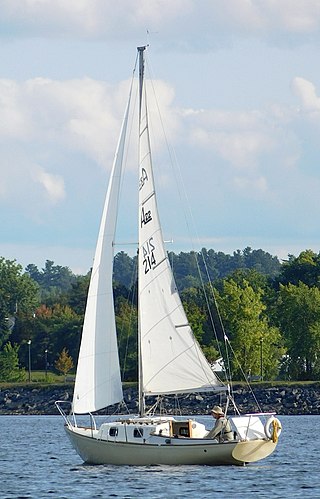
The Alberg 22 is a Canadian trailerable sailboat, that was designed by Swedish-American naval architect Carl Alberg and first built in 1970.

The Catalina 18, formerly known as the Capri 18, is a trailerable American sailboat that was designed by Frank Butler and Gerry Douglas and first built in 1985.
The Pearson Electra is an American trailerable sailboat that was designed by Carl Alberg as a Midget Ocean Racing Club (MORC) racer and first built in 1960.
The Capri 25 is an American trailerable sailboat that was designed by Frank Butler as a one design racer and first built in 1980.
The Merit 25 is an American trailerable sailboat that was designed by Paul Yates as a Midget Ocean Racing Club (MORC) racer and first built in 1978.
The Parker Dawson 26 is an American trailerable sailboat that was designed by Robert Finch as a cruiser and first built in 1972.
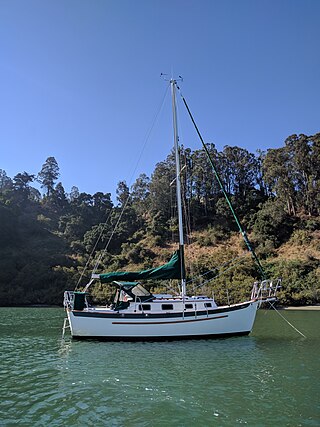
The Dana 24 is an American trailerable sailboat that was designed by William Crealock as an ocean cruiser and first built in 1974.
The Islander 24 Bahama, also called the Islander Bahama 24, is an American trailerable sailboat that was designed by Joseph McGlasson and first built in 1964.














